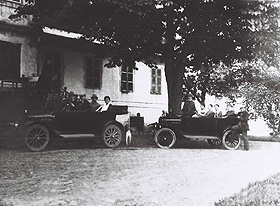HISTORY OF KELMĖ MANOR

The territory of Kelme Estate started forming in the 15th century. Kelme then was an estate of the Grand Duke of Lithuania. At the end of the 15th century Aleksandras, the Grand Duke of Lithuania, granted Kelme Estate to Jonas Kontautas. In 1591 the estate went to Gruzevskiai family.
Conveyance Deed of 1591 clarifies that the manor was located exactly at the same place as it is at present. The manor, for centuries owned by the Gruzevskiai family, was built approximately in 1780. Layout structure, locations of the main buildings and roads, park, and garden remained unchanged. In 1892 architect F.Lehmann executed a reconstruction project of Kelme Estate Manor, and in 1898 a project for establishing a park was prepared. These were the last major reconstruction works forming the final unity of the estate period.
The old Kelme Estate Manor is a valuable monument of Lithuanian architecture and history. It is a rare in Lithuania baroque style provincial estate. Kelme Estate Manor reflects the most distinctive features of the development of manor architecture, construction, parks, art and farming. It is a large manor of mature composition with lots of authentic buildings, plants and water bodies.
There is an interesting two-storey building at Kelme Estate Manor, by the road towards the town – a gate constructed in 1668 and reconstructed in the 18th century. At the premises of the first storey there were stairs and an entry for serfs, on the second storey there used to be a library with an open narrow arcade for an orchestra. During the 18th century the library situated there was famous for its richness – it held a stock of 5000 book volumes. The library also compiled a number of valuable manuscripts, rare printed matter in different languages. The Estate held lots of unique numismatic collections the most valuable thereof was a coin collection consisting of Greek and Roman coins. A considerable document archive was kept at Kelme Estate Gate Library comprised of archive material belonging to the Gruzevskiai family, the owners of Kelme Estate, related to a large part of Samogitia. In 1941 the archive of Kelme Estate was transferred to “Ausros” museum in Siauliai, and in 1952 the museum passed it to the Library of the Lithuanian Academy of Sciences where approximately 20 thousand pieces of text sheets from the archive of Kelme Estate are stored. A smaller part of this archive is stored at Martynas Mazvydas National Library of Lithuania and Kaunas National Archive.
Kelme Estate was ruled by the Gruzevskiai (Gruzewski) family for approximately 350 years. The ancestry of this family lies in Poland, Lomza region. Kelme Estate used to be the focus of education and culture during different periods of history.
Gruzevskiai family was an active supporter of the Reformation. In 1596 they established a Protestant Parish in Kelme and in 1622 they built a stone church. Even the General Residence of the Reformation Priests of Samogitia was located in Kelme for some time. Gruzevskiai family also founded the first school in Kelme. During the 18th – 19th centuries several famous people, who were active participants of the cultural and political life of the country, belonged to Gruzevskiai family.
Jurgis Gruzevskis (died on 08-11-1807 in Tylza) was Adjutant General of Stanislaw August Poniatovski, King of Poland. While living in Kelme, he compiled an archive of the Reformation history – the only one in Lithuania, a rich collection of numismatics, a collection of ancient medals, a library consisting of the most scarce books (approximately 5000 volumes).
Jokūbas Gruzevskis, holding the rank of major, served at the Lithuanian Tribunal.
Kelme Estate played a historical role at the Rebellion of 1831. Julius Gruzevskis, the contemporary owner of the Estate, was the member of Rebel Committee of Raseiniai District. The Committee decided to start the Rebellion on the day recruits are brought to Raseiniai, i.e. on the 26th of March, and concluded a Rebellion Deed. The Rebellion started at Kelme Estate and even sooner than it was expected. Everything was determined by circumstances: on the 23rd of March the rebels in Kelme were caught by rotmister Poplonski, Tsar’s officer, while they were casting bullets. Then the Committee decided to start the Rebellion immediately. In the morning of the 25th of March, 1831 the rebel squad, under the leadership of K.Jautokas, land-surveyor, occupied Kelme, dispersed tsarist administration, dismissed recruits and announced of commencement of the Rebellion to the summoned townspeople. In the morning of the 26th of March the joined forces of rebels attacked Raseiniai suddenly. Rebels, under leadership of Julius Gruzevskis, participated in the attack from Kelme and Nemaksciai side. Julius Gruzevskis formed the first troop of lancers, consisting of 400 scythers and 50 riders on his own account. Later Julius Gruzevskis was the member of the provisional district government of Raseiniai rebels. After the Rebellion was subdued, the landlord emigrated to France and later he settled in Switzerland, Geneva.
Bronislavas Gruzevskis (1845 – 1915) established “Biruta”, a company of butter manufacturers, in 1898 and was the Chairman of it. He was an active participant of the activities executed by Raseiniai associations of agricultural livestock care, breeding of žemaitukai, and mutual credit.
Boleslovas Gruzevskis (1848 in Verpena next to Kelme – 04-04-1922 in Kelme) – musician, painter, historian. He is the author of the historic work “Kosciol Ewangelicko – Reformowany w Kielmach” (1912). He also edited “Monumenta Reformationis Poloniae et Lithuaniae” together with E.Mercingas, A.Voyde and K.Kurnatauskis.
In 1940 Gabriele Gruzevskiene as well as her daughters Sofija and Adolfina, the last owners of the Estate, were driven out of the Estate, later they were expatriated to Siberia. During the German occupation period Kelme Estate was the residence place of baron fon Haren, a school was established here during the postwar period, later – the Centre of Soviet Economy of Aviculture, that maintained a small public museum located at the Estate Manor, which in 1990 laid the foundations for the present Kelme Land Museum.
Last update 2021-10-08

